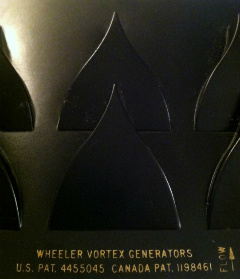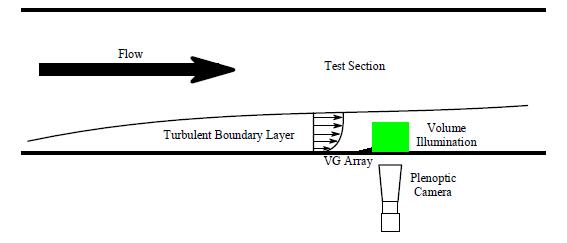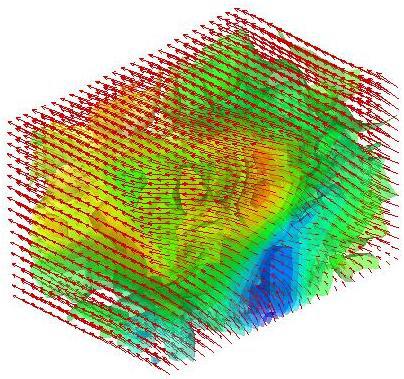Plenoptic camera to study 3-D turbulent flow over vortex generators
Undergraduate Research Project
- Student: Lauren McManus
In this study, the potential drag reducing nature of turbulent flow is considered. Higher energy turbulent flow better resists separation compared to laminar flow, helping to reduce induced drag. Vortex generators (VGs) can be used to either trip laminar flow to turbulent, or to promote strong streamwise vortices in already turbulent flow. To truly gain insight into the turbulent structures produced VGs, as well as interactions between the structures, a 3-D diagnostic technique must be used. The 3-D flow field of a Wheeler doublet vane vortex generator was studied using a newly emerging technique called plenoptic PIV. Plenoptic PIV measures the instantaneous 3-D velocity field of a turbulent flow using the novel light-field capturing ability of a plenoptic camera. From one setup of the plenoptic camera, a full 3-D vector field is produced, allowing 3-D flow features to be studied. Traditional 2-D PIV type data can also be gathered in any plane, at any slice in the volume. The plenoptic camera offers more data from a single run than any other diagnostics method available. Traditional PIV was also applied to measure the instantaneous 2-D velocity field at the same areas downstream from the vortex generators. Two-dimensional image slices obtained using the plenoptic camera agree with previous studies on VGs as well as the traditional 2-D PIV images obtained in this study, validating the plenoptic camera as a viable diagnostic method for studying vortex generators. The 3-D vector field obtained by the plenoptic camera also shows similar flow characteristics to those observed in previous studies with VGs. The plenoptic camera is shown to be a viable method to capture 3-D structures and their interactions in turbulent boundary layer flow.

Overhead picture of Wheeler Vortex Generators

Schematic of experimental arrangement for visualization of the 3D wake produced by vortex generators.

Example of a 3D velocity field obtained with the plenoptic camera
For more information, please see:
- McManus, L., “A Preliminary Study of Three-Dimensional Turbulent Flow over Vortex Generators with a Plenoptic Camera,” Proceedings of the AIAA 2013 Southeastern Regional Student Conference, Raleigh, North Carolina, April 8-9, 2013.



